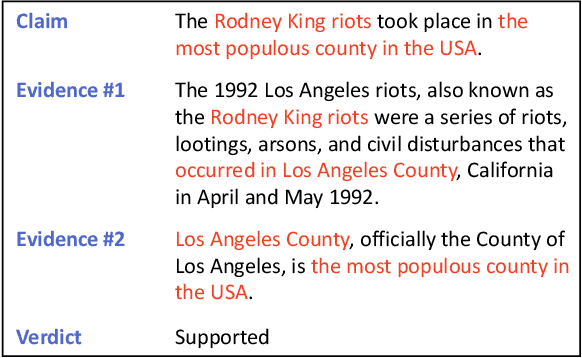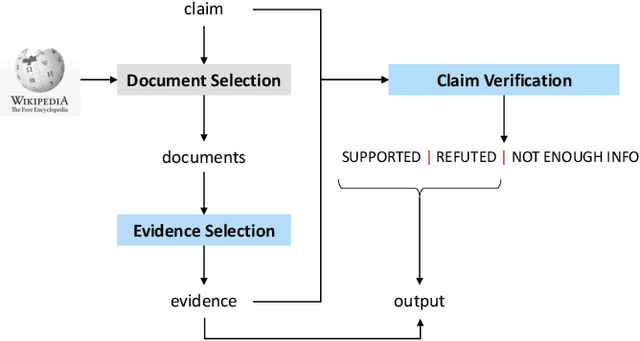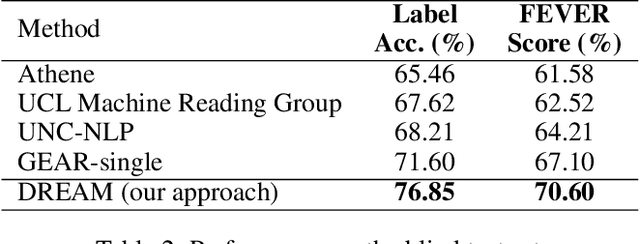Reasoning Over Semantic-Level Graph for Fact Checking
Paper and Code
Sep 13, 2019



We study fact-checking in this paper, which aims to verify a textual claim given textual evidence (e.g., retrieved sentences from Wikipedia). Existing studies typically either concatenate retrieved sentences as a single string or use feature fusion on the top of features of sentences, while ignoring semantic-level information including participants, location, and temporality of an event occurred in a sentence and relationships among multiple events. Such semantic-level information is crucial for understanding the relational structure of evidence and the deep reasoning procedure over that. In this paper, we address this issue by proposing a graph-based reasoning framework, called the Dynamic REAsoning Machine (DREAM) framework. We first construct a semantic-level graph, where nodes are extracted by semantic role labeling toolkits and are connected by inner- and inter- sentence edges. After having the automatically constructed graph, we use XLNet as the backbone of our approach and propose a graph-based contextual word representation learning module and a graph-based reasoning module to leverage the information of graphs. The first module is designed by considering a claim as a sequence, in which case we use the graph structure to re-define the relative distance of words. On top of this, we propose the second module by considering both the claim and the evidence as graphs and use a graph neural network to capture the semantic relationship at a more abstract level. We conduct experiments on FEVER, a large-scale benchmark dataset for fact-checking. Results show that both of the graph-based modules improve performance. Our system is the state-of-the-art system on the public leaderboard in terms of both accuracy and FEVER score.
 Add to Chrome
Add to Chrome Add to Firefox
Add to Firefox Add to Edge
Add to Edge